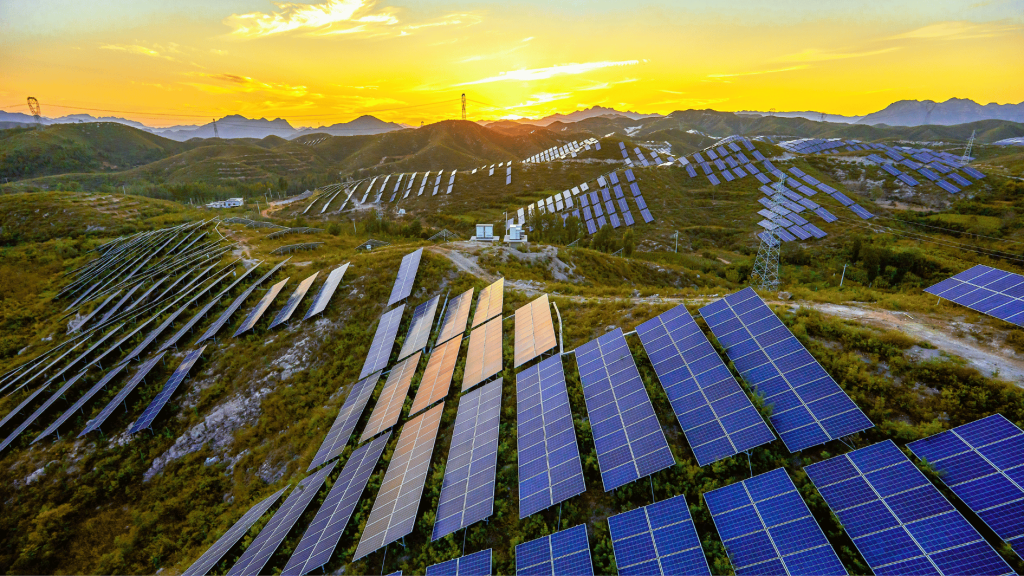Image source: Canva.com
Virtual net metering is a billing mechanism that allows electricity generated by a solar system at one location to be credited to the electric bills of customers at different locations. This system is particularly beneficial for community solar customers, enabling them to enjoy the benefits of solar energy without having solar panels installed on their property.
Understanding Virtual Net Metering
Virtual net metering (VNM) is a bill-crediting system for community solar projects. Unlike traditional net metering, where the energy is consumed at the same location it is generated, VNM credits the energy produced by an off-site solar system to multiple subscribers. This means that the energy generated by your share of a community solar project is fed into the grid, and the resulting credits are applied to your electricity bill, often at a discounted rate.
Community Solar

Community solar allows households and businesses to benefit from solar energy without installing panels on their property. Also known as “shared solar,” it involves a collective investment in a large-scale solar system that powers multiple homes or businesses. Participants subscribe to a portion of the system and receive discounted energy rates, without concerns about maintenance or equipment, which are managed by the system owner.
Net Metering

Net metering is a solar incentive that provides credits for excess power generated by your solar panels. This excess power is fed into the grid, allowing you to “store” energy without the need for a home battery. Traditional net metering applies to power produced and used at the same location. However, VNM extends these benefits to community solar subscribers who can’t install their own solar panels.
Virtual Net Metering: How It Works
The “virtual” aspect of VNM allows community solar customers to receive net metering credits based on their share of a community solar array. These credits are calculated based on the kWh of energy generated by your portion of the array. VNM, also known as aggregated or community net metering, distributes these credits among multiple participants who own shares in a community solar project.
Billing with Virtual Net Metering
With VNM, the amount of credits you receive depends on the size of your share in the community solar system. For example, owning 25% of a community solar array means you’ll be credited for 25% of its energy production. These credits appear on your electric bill, significantly reducing your energy costs without the need for rooftop panels.
You’ll receive two bills: one from your community solar provider for the energy credits and your regular electricity bill, which reflects the discount from the VNM credits. Think of the solar credits as a discount on your electricity, often allowing you to purchase electricity for 90-95 cents on the dollar.

Tips for Managing Community Solar Billing
Can You Make Money with Virtual Net Metering?
While virtual net metering primarily reduces energy costs rather than directly generating income, there are ways it can financially benefit participants:
- Cost savings: By participating in virtual net metering, you can lower your electricity bill significantly. The savings come from offsetting your consumption with solar energy credits, which can lead to substantial reductions in your monthly utility costs.
- Investment opportunities: Some community solar projects offer financial incentives or a share of profits to investors or participants. These programs might provide opportunities to earn a return on your investment in addition to energy savings.
- Property value: For property owners involved in virtual net metering, the reduced energy bills can enhance the property’s overall value and attractiveness to potential buyers.
- Tax benefits and incentives: Participation in virtual net metering programs associated with solar energy projects may also qualify you for various tax credits or incentives, further improving the financial benefits.
States Offering Virtual Net Metering
For community solar projects to be established, state legislation must enable and regulate VNM. While not all states have VNM, many are developing rules to support community solar. According to SEIA, there are active community solar programs in 41 states and Washington, D.C.
Top States for Virtual Net Metering
- California: Expanded VNM with a law in 2022, aiming for 100% carbon-free energy by 2045.
- Colorado: Leader in community solar since 2010 with extensive programs like Xcel Energy’s Solar Rewards.
- Illinois: Rapid growth in community solar since the 2016 Future Energy Jobs Act.
- Maine: Promoted community solar development with legislation in 2019.
- Maryland: Launched a community solar pilot program in 2017, aiming for 50% renewable energy by 2030.
- Massachusetts: Early adopter of community solar with significant VNM policies.
- Minnesota: National leader in community solar projects and capacity.
- New Jersey: Established a community solar program in 2018, targeting 100% clean energy by 2050.
- New York: Strong community solar market since 2015, supported by initiatives like NY-Sun.
- Rhode Island: Implemented community VNM in 2016, with multiple projects underway.
- Washington, D.C.: Expanding community solar since 2017, aiming for carbon neutrality by 2050.
Start Taking Advantage of Virtual Net Metering Today!
With community solar and virtual net metering, you can enjoy reduced electricity costs and contribute to clean energy without installing solar panels on your property. Explore community solar options in your state to start benefiting from VNM today!





